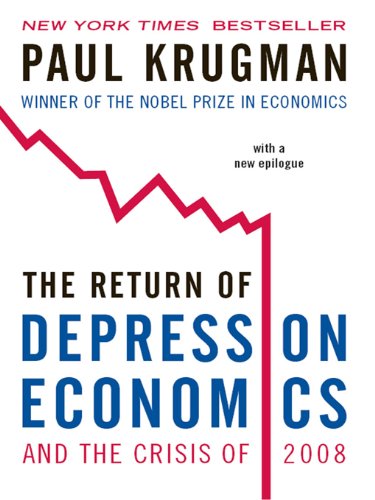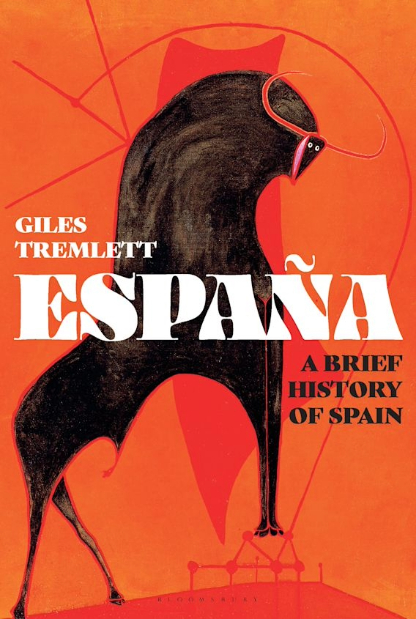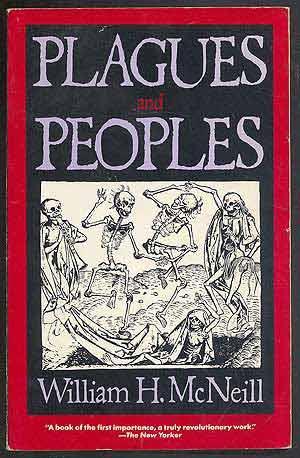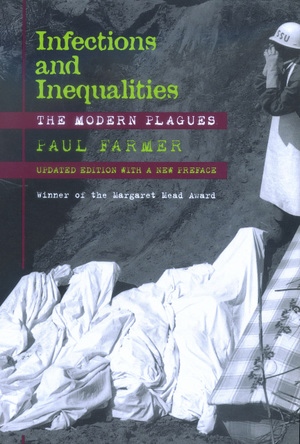History of the World in Seven Cheap Things: A Guide to Capitalism, Nature, and the Future of the Planet, Jason W. Moore and Raj Patel, University of California Press, October 2017, pp. 312, $34.95, ISBN 9780520293137
It is often said not to judge a book by its cover, but a lot can be gleaned from the book’s title. For me in particular, this has led me to avoid picking up self-help books with such promising titles as The 7 Habits of Highly Effective People and more recently, 12 Rules For Life. To say nothing of the bygone days when I wanted to sculpt my body in a week or transform my diet in two. This is not to say that I have a particular distaste for books seeking to console or transform. I merely question the ability to reduce the complexity of life with all of its connections and intersections to a simple cause and effect relationship embodied in a habit, or an object, that stands outside of the relations that make up our lives. Marx called this reification, the process by which social relations come to be identified with the physical properties of things. This inverse relationship which turns the object into a subject, and subject into object, makes physical things the determining factors. In other words, if you follow the habits identified by Stephen R. Covey, you might be highly successful too. In such a world, there is nothing stopping a Dalit woman in India from becoming Bill Gates.
There is yet another type of books that tend to disappoint. The “global history”, ”world history”, and “from ancient past to the present”. Generally, these volumes tend to reduce the global to a few countries and/or regions and contend with offering comparisons between them chronologically. By focusing on several case studies, the authors fail to offer connections between countries, or, how a certain development is based on specific occurrences in the other, which in turn depends on a set of constellations in the third. In other words, connections imply a system. Likewise, these volumes tend to portray history as episodic, rather than in flux, with punctuated equilibriums. Every stage of development contains within it seeds of its overcoming. Hegel would call this negation of the negation; more poetically described by Engels as “the midwife to deliver the future from the womb of the past”. This is brought forth when the contradictions on which a particular epoch is based are resolved, only to bring about a novel way of their structuring tending towards the ‘whole’.
In Raj Patel’s and Jason Moore’s book, we find both the numerical value and the claim to world history. The book largely presents a synthesis of Moore’s and Patel’s works. Moore’s previous book introduced the ‘web of life’ as the organizing principle of relations between nature and society. The ‘web of life’ is “nature as us, as inside us, as around us”. In seeking to develop new language, Moore revamped oikeios, which used to mean belonging to a household, to imply, as he notes with Patel in Seven Cheap Things, “the creative and multilayered pulse of life making through which all human activity flows, shaped at every turn by natures that consistently elude human efforts at control” (p. 19-20). As in Capitalism in the Web of Life, Moore proves his penchant for inventing new words, albeit redundantly. Other than oikeios, there appears “The Great Domestication” in Seven Cheap Things. What does it mean? The creation of households. Patel’s contribution is evident in the notion of value and clear prose.
Returning to reification and the flux of history, Seven Cheap Things fails to outline the history of the world as represented by the seven cheap things – the very project it set out to do. It was doomed from the beginning.
Seven Cheap Things?
The seven cheap things that Moore and Patel identify are Cheap Nature, Cheap Money, Cheap Work, Cheap Care, Cheap Food, Cheap Energy, and Cheap Lives. For the authors, cheap denotes a set of strategies to control the web of life, or, to manage capitalism by temporarily fixing its crises. It is not merely low cost, but “a practice, violence that mobilizes all kinds of work…with as little compensation as possible” (p. 22). Cheapness as strategy is simply a way to organize the market economy that satisfies the profit-seeking behavior of the capitalist class. As such, the authors would have profited if they defined it in terms of a space where class struggle unfolds. This is perhaps where Patel’s view of value takes precedence, with its emphasis on monetary value. Moreover, the book identifies seven cheap things, which marks a notable departure from Moore’s previous work in which he outlined four. Now, labor, food, energy and raw materials are accompanied by care, work and lives. Their choice of the seven is justified by their claim that all of them were “present at the birth of capitalist world-ecology”, which they identify as having begun in the 16th century on the island of Madeira.
Cheap Nature refers to organizing life. For the authors, Nature was invented by the philosophers who sought to extricate nature from society. Cartesian dualism led to colonialism by distinguishing the thinking things from the extended things, which allowed the European conquerors to justify their exploits by seeing the indigenous population as extended things, as well as to destroy nature. Cheap Money was simply the financialized nature of money, which finances wars, destroy landscapes and impoverishes the working class. Cheap Work occurred when certain categories beyond the reach of the cash-nexus are included in the smooth functioning of the capitalist economy. Thus, the unpaid labor of women and the theft of nature are crucial to capitalism and are obtained free of charge. This is facilitated by the initial separation of Nature from Society, whereby the cheapening of things falls in the domain of nature. In order to reproduce Cheap Work, Cheap Care was required. Cheap Care structures the social, political and ecological units, which the authors call households. Cheap Care as a strategy imbued humans with certain characteristics better to fulfill their role within capitalism’s ecology. Men were the economic agents within the cash-nexus, while women were confined to the household. This relationship was formalized through law, and property law in particular, which outlined what can be owned and who can do the owning. In order to maintain profits, the workers’ exploitation had to be complemented with their class reproduction. Cheap Food was thus essential. Industrial scale farms with their artificial growth treatments enable the cheapening of food. Cheap Energy at once destroyed the environment and the working class, as labor was displaced by fossil fuel driven technology. Lastly, Cheap Lives ensured that certain humans were made disposable through racism.
Seven Cheap Things don’t pass the muster. Other than being more of a truism than a contribution to the ongoing debate on capitalism, the seven things represent basic facts of capitalism. As stated earlier, Patel’s scholarship might have played more of an influence in that complex socio-ecological relationships are reduced to the price of things capitalists use. The infamous $200 burger of Patel comes back to haunt this work as if paying the right amount would remedy the ills of capitalism. Moreover, the reified nature of things is evident in the title, as well as in the actual analysis. While Moore acknowledges the web of life and the interrelatedness of the seven cheap things, the logic fails to sustain itself. How can the web of life be reduced to a thing, let alone seven cheap things? This makes their choice of seven things all the more arbitrary, as literally any other thing could have been chosen.
This leads to their failure to grasp the world-scale processes, as they constrain themselves by examining world history as a framework that developed in the 16th century.
World History?
The book’s chapters open with Columbus’ voyages. This is strategically so, in order to support their claim that capitalist world-ecology was established in the 16th century. The authors locate the origins of capitalism on the Madeira island in the 15th century, with the creation of its sugar plantations and factories that employed slave labor. Plantations drastically changed the ecology of the island by denuding it and by exhausting its soils. The sugar produced on Madeira was destined for Europe and was in turn financed by its bankers. For Moore and Patel, this is the origins of capitalism. As they state, “Capitalism didn’t leave Madeira – it reinvented itself” (p. 17). From then on, the system merely reinvents itself, but it does not change.
This view of historical change is myopic, in that it fails to account for qualitative differences that marked the beginning of each epoch. For example, the authors fail to account for the rise of fossil capitalism in the 18th and 19th century, which drastically reshaped the processes of production and consumption alike. Moreover, by decoupling society from nature (in order to obtain energy, that is not to say that Descartes was correct), it allowed for factories to open in more places. Navies could reach far-flung continents to occupy them and subdue their resistance by substituting their reliance on the wind with coal. This was something that the 15th and 16th centuries lacked. The authors claim that the fossil economy was invented in the long 16th century merely because coal and peat were used, but their use only increased significantly with the rise of fossil capitalism and the industrial revolutions. Virtually any chart on the coal production per capita will confirm the dramatic rise in production occurring in the 18th century. The increase in the use of coal marks not only a quantitative shift but also a qualitative one. For Moore and Patel, just because something was used in the 16th century implies their continued origins that stretch into the 21st century, which is largely not the case.
The authors’ account of world history is thus hardly global and fails to outline qualitative changes in connections that have transformed capitalism over time.
Solutions?
Moore and Patel attempt to end on a hopeful note, claiming that a different world is possible. They call their program reparation ecology, which refers to the restoration of the environment after humans have damaged it. Albeit something they claim to have coined, it is similar to George Monbiot’s call for rewilding, which likewise calls for the restoration of ecosystems. Both approaches fall within the narrative of the Fall, masterfully developed by Carolyn Merchant, which sees attempts to restore the garden of Eden after the fall as stemming from Christian narrative.
The authors argue that the program must include recognition, reparation, redistribution, reimagination, and recreation. Other than the stylistic alliteration, the program fails to outline a useful strategy for changing our current predicament. The authors claim that we need to recognize capitalism’s ecologies and offer reparations to those and that which was harmed. In order to achieve reimagining, the relationship between humans and the environment would have to be rethought. One way of doing so is through commoning and redistribution of resources. Recreation, or meaningful life and dignity, would then be possible.
This program could hardly put a dent in capitalism. Its goal is attitudinal change and not a system change. The program does not engage with the current social movements aimed at repairing the metabolic rift and does not offer a revolutionary praxis – a claim it makes.
***********************************************************
Jason W. Moore and Raj Patel’s book offers useful commentary on thinking about capitalism in terms of connections. However, they fail to engage the current debate in the scholarship. They offer their input as a novel way of thinking about capitalism and nature; something which it largely is not. Their argument rests on well-developed foundations. Moreover, their failure to account for changes in capitalism’s development is largely due to their dogmatic belief that its longue durée development in the 15th century represents a constant throughout capitalism’s history. Their proposed solutions are more posturing than praxis and come at a time when we need to give action more thought than style.




